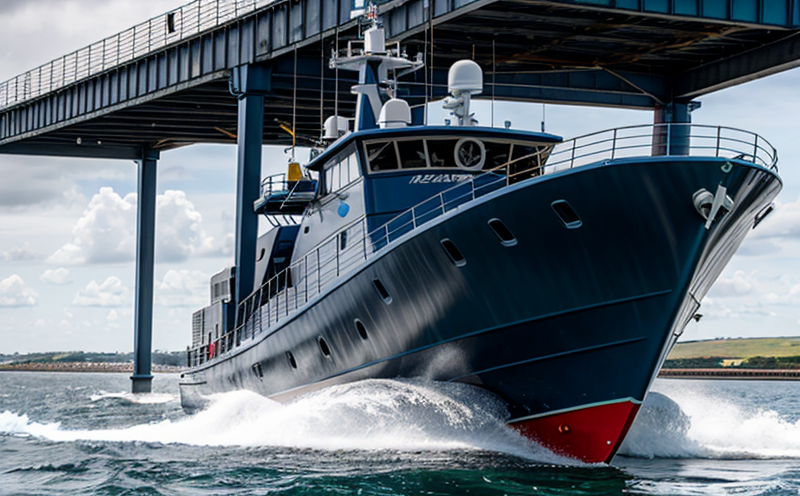ASTM G31 Corrosion Testing of Propeller Alloys
The ASTM G31 corrosion testing method is a crucial standard utilized to evaluate the resistance of propeller alloys used in marine environments. This test is vital for ensuring that the materials selected can withstand the harsh conditions encountered, including saltwater, humidity, and exposure to various chemicals.
Marine engines and propulsion systems are exposed to a wide range of corrosive elements, which can lead to degradation and failure if not properly addressed. ASTM G31 provides a standardized approach to assess the performance of these materials under controlled conditions that simulate real-world environments. This ensures that the propeller alloys used in marine applications meet stringent quality standards.
Performing this test is essential for several reasons, including compliance with international regulations and the longevity and reliability of marine equipment. By adhering to ASTM G31, manufacturers can demonstrate their commitment to producing high-quality products that are reliable and sustainable over time. This not only enhances brand reputation but also ensures safety at sea by preventing accidents caused by material failure.
The testing process involves exposing specific specimens to a corrosive solution for an extended period under controlled conditions. The results help in identifying the most suitable alloys for marine applications, ensuring that they can operate efficiently and safely even in challenging environments.
Scope and Methodology
| Test Specimens | Treatment Conditions | Measurement Techniques | Acceptance Criteria |
|---|---|---|---|
| Solid propeller alloy samples cut to standard dimensions. | Submerged in a saltwater solution, maintained at 35°C for up to 240 hours. | Weighing changes and visual inspection of corrosion damage. | Absence of visible pitting or weight loss exceeding 10% after testing. |
| Comparison with untreated samples as a control group. | Temperature-controlled environment to ensure uniformity. | Microstructural analysis post-corrosion exposure. | No significant change in material microstructure, indicating resistance to corrosion. |
| Preparation Steps | Testing Environment | Data Collection | Reporting Standards |
|---|---|---|---|
| Cleaning and conditioning of samples to remove any surface contaminants. | Controlled laboratory environment with precise temperature and humidity control. | Documenting all observations, including weight changes and visual corrosion patterns. | ASTM G31: Standard Test Method for Measuring the Resistance of Metals to Atmospheric Rusting by Salt Spray. |
| Marking samples uniquely before testing. | Use of standardized containers and solutions. | Spectroscopic analysis post-testing. | Inclusion of ISO 12944 for additional context on corrosion protection. |
Benefits
The primary benefit of ASTM G31 corrosion testing lies in its ability to identify the most suitable propeller alloys for marine applications. By ensuring that materials can withstand harsh environmental conditions, this test enhances the reliability and longevity of marine equipment.
Compliance with international standards like ASTM G31 also helps manufacturers meet regulatory requirements and build trust with their customers. This is particularly important in industries where safety and performance are paramount, such as maritime transport.
In addition to these advantages, ASTM G31 testing supports continuous improvement in product design and manufacturing processes. By identifying potential issues early on, companies can implement necessary changes to enhance the performance of their products.
Finally, this test contributes to environmental sustainability by promoting the use of materials that are less prone to corrosion, thereby reducing waste and extending the lifespan of marine equipment.
Why Choose This Test
- Compliance with ASTM G31 standard ensures regulatory adherence.
- Identifies optimal propeller alloys for marine environments.
- Enhances product reliability and longevity through rigorous testing.
- Supports continuous improvement in manufacturing processes.
- Builds trust and reputation among customers.
- Promotes environmental sustainability by reducing waste.





